
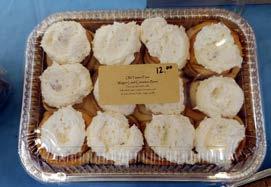
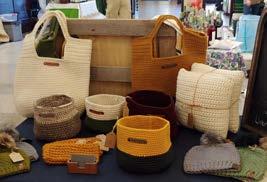

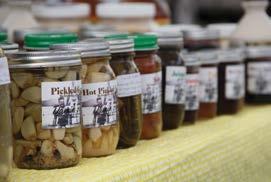


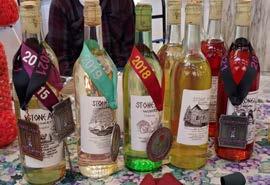
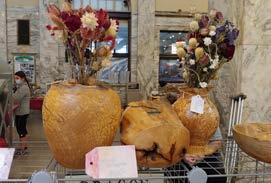









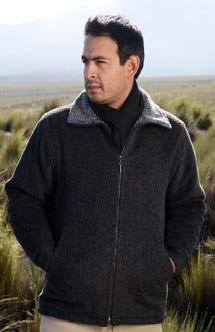


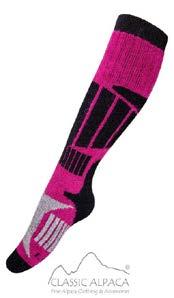
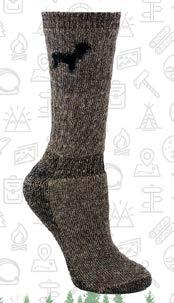

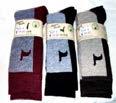


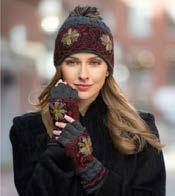
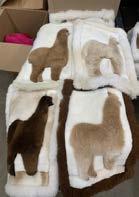
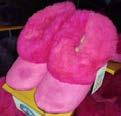
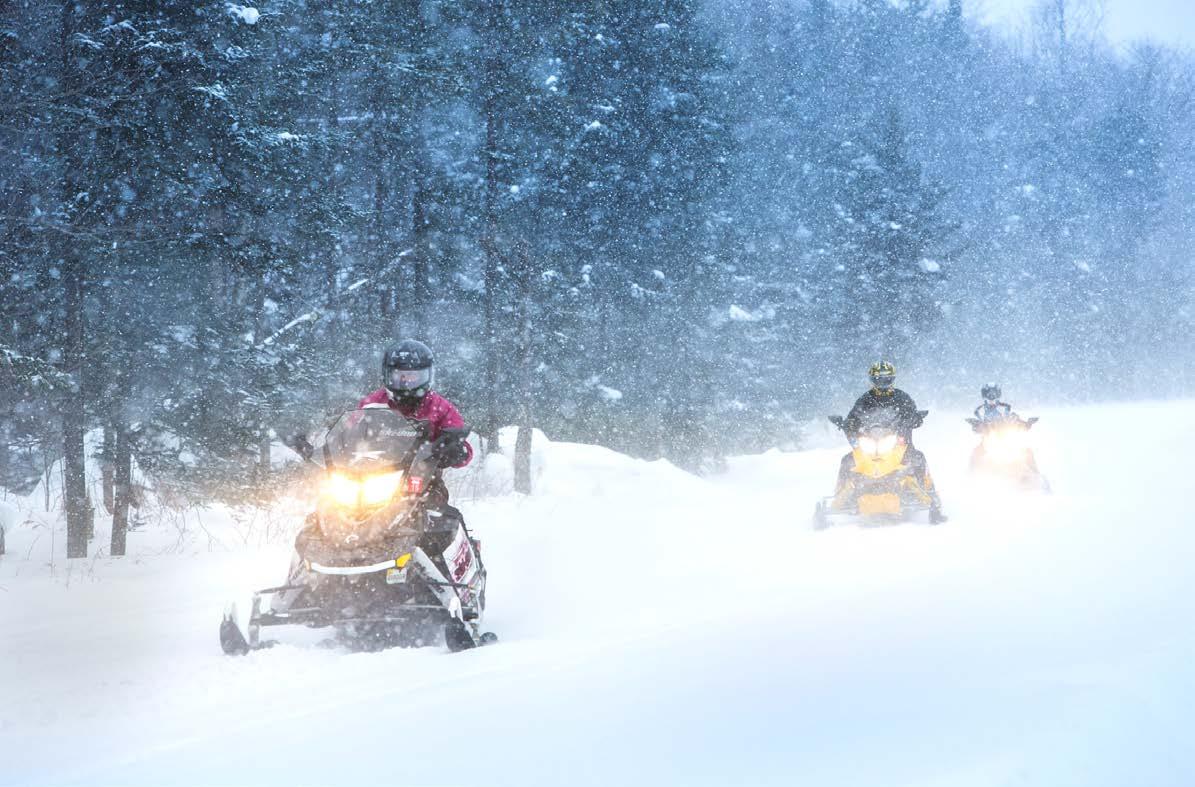

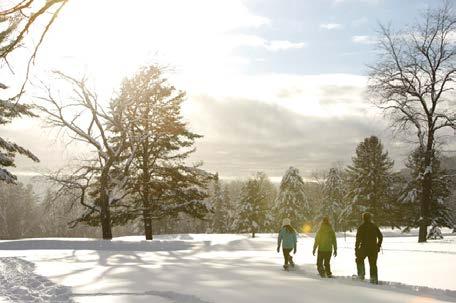











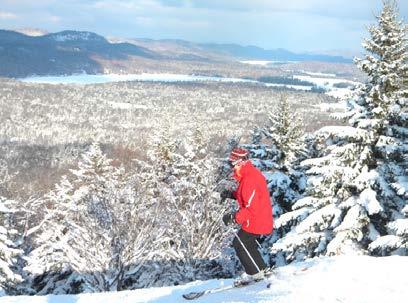








Next Issue: February 1st Available exclusively from our sponsors.

Resolution






















































Next Issue: February 1st Available exclusively from our sponsors.

Resolution
As we look ahead to our 10th year of publishing MVL Magazine and our 18th year producing the TV show, we also look back. 2022 was our first year without our host (and biggest fan), Richard Enders. I stopped by to see his wife, Eileen, on December 15th—his birthday. As much as we feel the hole he has left in our lives, I can only imagine the void left in the lives of his wife, children, and grandchildren.
PUBLISHERS
Lance and Sharry Whitney
EDITOR
I think back to when we saw Richard every week—always beaming when we picked him up in the MVL van and wondering what adventure awaited. He always greeted us with optimism. Though it has been many years since the first MV Living episode aired, I am still excited about the future. My mind is spinning with new ideas for 2023.
Sharry Whitney
DESIGN & LAYOUT Lance David Whitney
ASSISTANT EDITOR Shelley Malenowski
CONTRIBUTORS
January 2023 contents Matt Perry’s Nature Restaurant Guide Antiques Guide Nature in January MV Astronomy Club Classical MV Valley Girl Adventures MV Crossword Gallery Guide Oneida County History Center Adirondack Journal Tales from Shawangunk Writings of Richard Enders On The Farm with Suzie Advertiser Directory Contest Answers/Sponsor News
Our eldest son returned home from Florida last month for “Thanksmas,” our first annual celebration of Thanksgiving and Christmas that falls between the two to avoid the holiday travel stress. As we walked around Clinton, blanketed in snow and white lights casting a magical glow, I saw our village anew through the eyes of someone who had returned home. I saw the magic. But it’s not really magic; it’s the work of many people. My son and I contemplated all the time involved in stringing the thousands of lights and all the work the shopkeepers invested in their window displays. We were thankful that so many people decided to continue this tradition.
So how was it that Richard always looked forward to our Road Trips to many of the same places he had been to hundreds of times before? I have come to believe that it was a conscious decision—a decision each one of us makes when we wake up every morning. As the poet Mary Oliver put it, “What is it you plan to do with your one wild and precious life?” •
Riggie is roaming around and hiding in the advertising areas of the magazine. Next to him you’ll find a letter. Find all the Riggies and rearrange the letters to answer this riddle. Enter by the 15th of the month to be entered in a $100 shopping spree at one of our advertisers! (Excluding media and banks) One entry per household per month. Mail to: Riggie’s Riddle, 30 Kellogg St., Clinton, NY 13323 or email: mohawkvalleyliving@hotmail.com NOTE: Please enter Riggie’s Riddle and crossword puzzle in separate emails. In January when there is snow, We head north for a spectacle. Snowmobile racing is quite the show, During this town’s Snow Festival! 1 word, 9 letters See the answer and winner to last month’s riddle on page 46!

Peggy Spencer Behrendt, Carol Higgins, Suzie Jones, Melinda Karastury, Rebecca McLain, Matt Perry, Cynthia Quackenbush, Denise Szarek, Gary VanRiper
CONTACT US (315) 853-7133 30 Kellogg Street Clinton, NY 13323 www.MohawkValleyLiving.com mohawkvalleyliving@hotmail.com
Mohawk Valley Living is a monthly magazine and television show that explore the area’s arts, culture, and heritage.

5 12 15 18 21 22 23 24 25 27 30 33 39 41 45 46 Mohawk Valley Living is brought to you by Steet-Ponte a u t o g r o u p






We began the year with twelve Beavers in the Spring Farm Beaver colony. This is about the average number for a healthy colony in early winter. The colony matriarch and patriarch were Tippy and GenLo, respectively, together now for their 5th season. Their kits included three born in 2021, and six born in 2020. Sassafras, born in 2019, was also still with the colony. This was interesting, since Beavers typically disperse from their home colonies at the age of two. Was Sassafras going to remain and become an assistant matriarch as Tippy had done with her mother or would she only stay for one more winter?

Beavers are unique animals. The role they play in an environment is a crucial one that scores of other species depend on for their existence. The wetland habitats they create are ecological masterpieces and serve as wildlife oases. Beavers are among the easier mammal species to observe and study. They tend to tolerate the presence of people. Over the years, I have cultivated a relationship with our Beavers. They know and trust me and think nothing of going about their daily tasks with me nearby. In most areas where Beavers live, they keep to a more nocturnal schedule. However, at our sanctuary, Beavers are often active in the middle of the afternoon. When the species is not threatened by human activity, domestic dogs, and traffic, they respond by spending more time in the open during daylight hours.
The last days of 2021 were relatively mild, and that trend continued into the first days of January. Low temperatures were in the forties, there was no snow, and the ponds were ice-free. Typically, when fall-like weather persists, Beavers revert to food-storing mode. They resume trekking out onto the land and collecting saplings to store in their
underwater “food cache.” The cache is what Beavers will draw on through the winter when thick pond ice and deep snow prevent them from foraging on land. During a spate of mild weather, they may also continue to bolster their dams and winterize their lodge. Tis is an activity they cannot do once mud, their primary building material, freezes and becomes non-pliable.
As it happened, the warm spell was short-lived, and on the morning of January 3rd, the temperature dropped into the low teens. There was a fresh inch of snow on the ground, and the beaver ponds were completely iced over. To continue to see the








and scooping up unseen flying insects. Yellow-shafted Flickers were also back in town, and one male showed an interest in a dead tree that stood over the north shore of Julia’s Pond.
At Morton’s Pond, Lydia began sitting on eggs on April 3rd. She had chosen a lessthan-ideal place to build her nest. It was on a grassy piece of shoreline near the inflow of the pond. Flooding wasn’t as much of a threat as the nest’s accessibility to predators. Why she didn’t choose to make her nest on one of several available islands was a mystery to me. Those sites would have been defensible. Regardless, they had chosen their site and were committed.


A significant winter storm hit the region on the night of April 18th. By the next day it had deposited a foot of heavy snow. Many trees suffered broken limbs from the excessive snow load. Willows and pines were especially hard hit. Our trails were blocked in many places – primarily by squashed buckthorn and honeysuckle bushes. The beaver ponds didn’t freeze but were once again covered with a thick layer of slush. As it happened, it wasn’t too much of a chore to open a hole in it, and the Beavers came out as normal that morning. Both goose nests on the property survived the storm, although Lydia and her nest had been buried. In fact,
only Lydia’s head protruded above the snow.


At the start of May, the water levels at Julia’s Pond were down by a foot and no one seemed to be in a hurry to fix it. GenLo was seen working on the dam a few days before, but with a reduced work force, He may have been the only one in the colony up to the task. Tippy and two of the yearlings had been coming out, but they didn’t seem interested in pitching in with the heavy work. Regarding the yearlings, we were consistently seeing only two of them. This meant that one had left the colony. Cases of yearling Beavers dispersing are not unheard of, but it’s atypical. Perhaps she left with Sassafras or one of the two-year-olds.
On the morning of May 2nd, I made the sad discovery that Roddy and Lydia’s nest had been destroyed by a predator during the night. Broken eggs were strewn about on the shore. Both adult geese appeared unharmed, but their breeding attempt had been thwarted. The eggs had been very close to hatching at the time of destruction. I examined the nest site for clues about the predator but found nothing conclusive. The goose pair looked to be in mourning. They had put so much effort into nest building, incubation, and guarding, and now they would be deprived of parenthood.
Most of May was much warmer than average, but it was cold on the morning of the 8th when Tippy came out of the lodge and walked up on shore. I could see that she was lactating, and that meant she had given birth to kits. I had yet to hear any kit vocalizations from inside the lodge, but it was early days yet. Tippy was eager to get her breakfast that morning. Her increased demand for nutrients was related to her need to produce milk for her kits.
During the second week of May, it became unseasonably warm with afternoon temperatures reaching into the mid-80s. Trees responded to this by exploding into full foliage. It was as if someone flipped a switch and made it summer. The rainfall for

the month and the season was well below average, and we wondered if we were going to experience a drought. Fortunately, the beaver ponds are highly drought resistant. Our spring-fed creeks have always continued to run even during extreme droughts.
For whatever reason, the Beavers were out all day long on the 14th of May. As has been the case in the past, so much daytime Beaver activity usually portends a schedule shift. From the 15th onwards, Beavers would only be out in the afternoon. The Beavers seen were Tippy, GenLo, and Hazelnut. For whatever reason, Hazelnut’s litter mate was suddenly not accounted for. Had he left the colony too? On the 15th I began hearing the high-pitched mewing calls of kits inside the lodge. Did the birth of the new kits provide the impetus for the second yearling to leave?
In mid-afternoon on the 19th, I had just started down the path from the trailhead when I heard a splash come from the creek that passes beneath the road. I then glimpsed a Beaver tail disappearing into the culvert that runs under our trail. It was the Beaver yearling that had recently left the colony. I could see that some of the willow saplings growing
streamside had been chewed down, so obviously the youngster had spent some time in that unlikely place. Later, I sneaked back and saw the Beaver sitting by the entrance of the large culvert. He was calmly nibbling on willow like nothing was amiss.
In the last days of May, I was seeing no sign of any Beavers outside of the Julia’s Pond system. GenLo and Hazelnut were
out at about 7:15 each morning. GenLo was then remaining out, sometimes into late morning, to work on the dam. Tippy was handling the afternoon shift on the dam. On the 26th, she was seen making multiple trips back and forth, dredging up mud and slathering it onto the structure. That same afternoon, Tippy did something else she only rarely does – she slapped her tail on the water. At first, I didn’t know why, but then I perceived a raccoon standing at the edge of the dam and probing into the mud with her hands.
In the third week of June, the Beavers started doing more work on the lodge at Julia’s Pond. Branches were added during the night. There were also fresh signs of Beavers foraging in the meadow. The dam at Lucy’s Pond had been bolstered and the corresponding water levels there had risen. GenLo continued being a morning Beaver. His routine was to first patrol the pond before coming close to shore near the lodge. He would come in the shallows, shake the water from his head, and take a sweet potato tossed to him.
In the last days of June, persistent rain turned the water at Julia’s Pond a choc-

olate brown. In the afternoon, Hazelnut came over multiple times to get sweet potato pieces. He would then take them into the lodge and surrender them to begging kits. Honestly, I couldn’t tell if he was giving them out or if the kits were just taking them.

On July 1st, one of the season’s new kits followed Tippy out of the lodge. My view only lasted a few seconds, as the kit quickly dove back underwater and retreated into the lodge. Tippy had only three kits in 2021, perhaps her litter would be smaller this year. As female Beavers get older, they generally produce smaller litters. Please look for part two of the Spring Farm Beavers’ Story in the February issue of Mohawk Valley Living Magazine. •
In celebration of the Kirkland Art Center’s 60th anniversary, it has launched its first capital campaign in 30 years. The campaign will address two top priorities:
1. Make urgently needed renovations and repairs to the roof and windows.

2. Build anew culinary arts program in response to community interest. Help preserve this cultural anchor for the Village of Clinton and Town of Kirkland. Invest in the next 60 years of exhibitions, art and dance classes, concerts, performances, and community events that help make Clinton and Kirkland a desirable place to live, work, and study.
Make a donation by check or online by credit card.
9 ½ East Park Row PO Box 213 Clinton, NY 13323

Kirkland Art Center, 9 1/2 East Park Row, PO Box 213, Clinton, NY 13323 315-853-8871 www.kacny.org
The Kirkland Art Center is a registered 501(c)(3) not-for-profit organization (EIN15-0618473). Your donation is tax deductible as allowable by law.



Be a part of Clinton’s history by making a donation to the Once in a Generation Capital Campaign!Matt Perry is Conservation Director and Resident Naturalist at Spring Farm CARES in Clinton. He manages a 260 acre nature preserve which is open for tours by appointment. His nature videos and photos can be found on the Spring Farm CARES’ Nature Sanctuary Facebook page.















































































































food supply, the chickadee will store some for later use. They will put seeds in tree cavities or pound them into tree bark. They may choose hundreds of different caching sites and, amazingly, all these places will be remembered by the bird. There is a real advantage to having multiple cache sites. While a single site is highly vulnerable to discovery and theft, a thousand sites ensure security. Indeed, pilferers will never find all of them. Interestingly, the chickadee can purge its brain of neurons that hold information that is no longer useful. So, in the beginning of fall, they can erase their knowledge of old caching sites, thereby making room to learn a list of new locations.

Black-capped Chickadees are gregarious, and often come within close proximity of other animals and people. Of all Northeastern birds, the Black-capped Chickadee is the species most likely to land in your hand to take birdseed. Individual chickadees may gain an affinity for certain people and continue coming to them for years. The life expectancy of the chickadee is around five years, although some may live twice that long.











We currently have a very special chickadee that lives at our nature preserve. We call her Lucia. Lucia is leucistic – meaning she has a genetic mutation which causes a reduction of pigment in her feathers and skin. While a normal chickadee has a black cap and chin, as well as a black bill, and black legs, Lucia has a completely white head, pale beak, and pale legs. She associates with “normal” chickadees, but her cottony head makes her stand out in a crowd. She’s been coming to the same feeder area for over two

















years. Last summer she went off to an adjacent territory to breed and we saw very little of her. However, in the fall she returned to her winter territory along with a posse of six conventional looking chickadees.


If you have some time to devote to the study of animal behavior, consider looking no further than our ubiquitous Black-capped Chickadee. Watch their interactions with each other and with other birds. Listen to their common call and count how many “dees” they tack on at the end. Watch how they fly away with food and try to see where they go to store it. Observe what they do, and perhaps you will discover other amazing facts about them.




•





As the new year begins, 2023 promises to be an exciting year for America’s space program. Although it is fun to follow missions that send robotic rovers, planetary orbiters, and satellites into the solar system, it is a different situation when people are onboard a spacecraft and leave our planet. Over the next couple of months, we’ll look at the history of human spaceflight, crews currently in space, and plans for future missions. Let’s start with a brief history.
The first time a human soared into the sky was on November 21, 1783 in a hot air balloon built by brothers Joseph and Etienne Montgolfier. Made of silk, paper, and wood, their invention took flight near Paris with passengers Francois Pilatrê de Rozier and Francois Laurent onboard. Witnessed by Benjamin Franklin, the adventure lasted about 25 minutes and sparked the imagination of scientists and the public.
From a powered flight standpoint, the Wright brothers were the pioneers who changed the world. The two persistent inventors made history in the sandy beaches near Kitty Hawk, North Carolina, when Wilbur and their primitive flying machine stayed in the air for 59 seconds, marking the start of the aviation industry. Airplanes evolved and flights became reliable and affordable, a transportation option we take for granted today.
But on April 12, 1961, the world was



startled when news broke that Russian cosmonaut Yuri Gagarin had launched in a Vostok 1 capsule, orbited the Earth once, and safely landed. Not to be outdone, NASA astronaut Alan Shepard became America’s first astronaut to fly into space a few weeks later on May 5. These two events triggered the start of the “space race” between the U.S. and the Soviet Union, a competition to claim technological superiority in space.
NASA’s early strategy to launch astronauts began with the Mercury program and continued with the Gemini program. Every launch became more complex for the crews and spacecraft, each designed to meet the ultimate goal: send humans to the Moon by the end of the 1960s. That goal was achieved when Apollo program astronaut Neil Armstrong stepped onto the Moon’s surface on July 20, 1969. Apollo was highly successful, sending a total of 12 astronauts to explore the Moon in six missions. The last human footprint was left by Apollo 17’s Eugene Cernan on December 14, 1972.
The next major NASA objective was quite challenging: build a reusable space transportation system to haul crews and cargo into space and land like a glider. After a number of redesigns and tests, the Space Shuttle program took shape. Compared to an Apollo spacecraft and its three astronauts, the shuttles – Columbia, Challenger, Discovery, Endeavour, and

Atlantis – were huge. They carried up to eight crew members, and the massive cargo bay was so large it could hold 50,000 lbs of payload. A school bus could fit inside! The program’s primary goal was to build a space station while providing safe access to low Earth orbit, and it certainly met that goal.
Between 1981 and 2011, a total of 135 Space Shuttle missions flew. They delivered many modules and supplies to the International Space Station (ISS), launched satellites, interplanetary spacecraft, and the Hubble Space Telescope! Sadly, the Challenger and Columbia were lost along with their crews. Astronaut Gregory B. Jarvis, who grew up in Mohawk, NY, was one of the Challenger crew members.


If it wasn’t for the Space Shuttles, we wouldn’t have the ISS, the world’s premier research laboratory. Next month we’ll take a look at the astronauts currently living and working on ISS and new crew plans for this year.
Wishing you clear skies! •
Hanny’s Voorwerp. Image Credit: NASA, ESA, W. Keel, Galaxy Zoo TeamInstrument: Cello

Age when began music: 5 years old
Education: Bachelor of Music, Performance, Crane School of Music; Masters in Music Education, University of Maine, Orono; Ph.D. in Reading Education, Syracuse University

Current position: owner and educator at The Treehouse Reading and Arts Center, NY Mills
Collaborations: I play with the Clinton Symphony of Mo hawk Valley, Aquarius String Quartet, Hamilton College Orchestra, and various other community groups or organi zations. I teach private students on cello, violin, and piano locally as well as in Cazenovia, New York.

Influences: My first cello teacher, George Teufel, is always the person whose words I hear in my head as I am perform ing and teaching.
I have always been inspired by Yo-Yo Ma, not just be cause of his amazing talent, but his kindness and humanity and how he has valued and brought attention not just to clas sical music but music from other styles and cultures, as well. I have worked with some wonderful teachers and conductors who always teach me something new and inspire me to play better - Diane Roscetti at the University of Maine; Elizabeth Stoyanovich, who conducted the Bremerton Symphony Orchestra when I was in Washington state; Chuck Schneider and Octavio Mas-Arocas with the Clinton Symphony; and Heather Buchman at Hamilton College.
“The most important thing about playing music is sharing something that is important, exciting, and beautiful with friends on stage and the audience. Each performance is a shared experience that slightly changes who we all are.”










January 6-February 25, 2023
Reception: Friday, January 6, 5-7pm
The Other Side 2011 Genesee St., Utica, NY www.theothersideutica.org
Hours: Thurs: 12-3pm, Sat: 12-3pm or by appointment












Through March 3, 2023

Exceptionally prolific artist Olistski worked through a range of disparate


often alternating between austerity and excess.



The

 by Ro Hall, Oneida County History Center Volunteer
by Ro Hall, Oneida County History Center Volunteer





Phrenology, a method of determining a person’s innate character and intelligence by examining bumps seen or felt on the exterior of the skull, was described in its heyday as “the greatest discovery of the age,” by 19th-century educator and enthusiastic adherent Horace Mann. Now universally recognized as spurious and a pseudoscience, the “discovery” of this practice has been credited to German-born anatomist and physiologist Franz Joseph Gall (1758-1828). Through his research, Gall had convinced himself that the skull’s natural bumps and protrusions were related to the underlying structure of the brain.
Far from being alone in succumbing to such theories, Mann’s credulity was shared by many of the 19th century’s educated elite, some of whom had the bumps on their skulls “read” in hopes of gaining insight into the sources of their personal accomplishments and perhaps clues as to what further glorious achievements their futures might hold.

It should be noted that others, such as writer and perennial skeptic Mark Twain and respected jurist Oliver Wendell Holmes, were among those who stood out opposed to so-called phrenological truths. Both received readings of bumps on their skulls from practitioners associated with the eminent firm of “practical phrenologists” Fowler and Wells – Holmes receiving his from Lorenzo Fowler, himself– and each concluded that the practice was a fraud.
And as early as 1839, TheAmerican Phrenological Journal and Miscellany was finding it necessary to refute naysayers, claiming in a lengthy article that, “it is only phrenologists” - that is, individuals who have studied phrenology - “who are capable of reporting on
the brain… Those who have not so studied and who are ignorant of its details”… are “not able to report accurately.”


As its popularity continued to grow, especially during the first half of the century, citizens of the growing metropolis of Utica, NY, availed themselves of the services of a practitioner of their own. New Hampshire-born John M. Crowley (1798-1842), a periodic resident of the city between 1825 and 1842 and prominent in the field, was absolutely convinced that “the truth of phrenology is demonstrated by facts…”



Certain that, “other conditions being equal, the strength of the mind is proportionate to the size of the brain” – which the shape of the skull, along with the placement and size of its “bumps”, would of course reveal four “temperaments” shared by all peoples. Crowley wrote that these included the “lymphatic or phlegmatic, the sanguine, the bilious, and the nervous,” each of which was to be found in a specific location in the brain. Those qualities when considered together could be depended upon to reveal the character, intelligence, and even the moral inclinations of a given individual.
For example, a person with convolutions on the skull’s surface that resulted in his receiving a high score in the “lymphatic/phlegmatic” area would likely have a temperament marked by “mental languor, dullness and inactivity.” A more “sanguine” individual could be expected to have a passionate character characterized by strong feelings – quite the opposite of one determined to be phlegmatic. “Bilious” persons could be counted on to show “great force and energy of mind and character,” while the “nervous,” though evidencing a “clearness of perception and of thought,” would nevertheless lack “endurance.”
Among Crowley’s local clients was prominent Utica editor and politician Richard U. Sherman. Crowley ranked him as superlative, or nearly so, in virtually every area following a detailed examination of his skull. Sherman scored a “5” - the highest possible score - in “conscientiousness” which provided proof for this particular client’s high regard for duty and integrity, and a “4” for “charity”, indicating “kindness of feeling,” although, in his case, “without a great deal of active benevolence.” And while he received another “5” in a category described as “veneration,” or “worship for the supreme being,” this was perhaps mitigated by the “3” he received in regards to “faith,” indicating “disbelief without very strong proof.”

As noted above, the “scientific” rationale provided in support of such theories was based on a belief that the somewhat bumpy terrain of the skull’s surface corresponded directly to what might be located directly beneath the bumps, in other words, in the brain itself. Dozens of personality characteristics, such as

“cautiousness,”


assigned, perhaps arbitrarily or perhaps in accordance with some scheme now lost, to specific areas of the brain. Various shapes seen or felt on the outer surface of the skull could, when properly interpreted by a trained phrenologist, describe the patient’s attributes and deficits and make fair claim to both explaining past behaviors while predicting the trajectory of that individual’s likely future.








“mirthfulness”
Sadly, the study of phrenology lent support to prevalent 19th century assumptions about intelligence and character traits as they were thought to relate to race and culture. Crowley himself submitted as “proofs’’ of the preeminence of western civilization and peoples when compared to those of the larger world, the fact that “the shape of the heads of Byron, Buonoparte(sic), Sir Walter Scott, De Witt Clinton… and all other great men,” evidenced a superiority in the areas of intelligence, character, and more, “when compared with those of ordinary men or with Hindoo, African, New Hollander, or Indian heads.” Although the credulous could always turn to the practice and continue to find support in its tenets for their erroneous and harmful presumptions, fortunately, the number of those subscribing to phrenological theories continued to decrease as the century wound to a close. •





 by Gary VanRiper
by Gary VanRiper


The Adirondack Park is truly our family’s home away from our home in Camden, New York, where I am writing this as another winter storm passes through the snow belt. I know those familiar with these pages are most familiar with the many hiking adventures I’ve been fortunate enough to enjoy during the past few decades throughout the park’s stunning six-million acres.
As I scrolled through several hundreds of photographs on my computer, I was reminded of the many relationships I’ve also been fortunate enough to make over those same years – particularly the activities and events that have so naturally followed bearing fruit today. Here are some of those relationships in my “2022 ADK Year in Review.”

One of the biggest stories this year affecting not only us, but businesses and tourists through the Adirondacks and beyond, had to be closing of North Country Books after so many decades of publishing and distributing hundreds of regional titles, including ours. Enter Blue Line Book Exchange founded by the owners of The Bookstore Plus in Lake Placid. And it has been a pleasure working with Nick who runs the warehouse and makes deliveries!
Some in the Mohawk Valley may be aware of my 30plus year involvement with the CareNet Pregnancy Center, headquartered in Utica. The first such regional office was founded in our living room. What may not be known is that


I was able to co-found the first such center in the Adirondacks - AscentCare in Saranac Lake. We held our first banquet this past spring at the Hotel Saranac and raised more than $125,000.


In the summer, we attended the annual Arts in the Park event in Inlet where we happened to meet Steve, who was one member of the first crew that attempted to reintroduce the lynx into the Adirondacks. We had written about it in our seventh book, which came up in our conversation at our book booth and the connection was made - a very cool moment.

Then came our annual family vacation, when we usually rented a house somewhere in the Adirondack high peaks region where our three generations gathered for our favorite activities and pastimes. This year, there was enough room at our own family compound on Fourth Lake in Inlet, where there was fishing, paddling, and hiking - and so often, the awesome sunsets. My hiking buddy, Mark Lowell, usually joins us for a few days every vacation. We did hurry up Rocky Mountain with its wonderful summit payoff, including a trip to the local bakery directly afterward to finish properly. Happily, a quick tour of the busy lake found the common loons still continuing to thrive there.
There was, of course, the painful loss of Susan Loeffler, our dear friend and cover artist for our book series. Sharry and Lance were kind enough






A new year begins. A new article to write. I always feel intimidated and overwhelmed, but a big motivator is wanting to share our vision for a better world. We want to influence others to try to live gently on the earth, consuming minimally without being overly austere.





It’s the same with almost everything. It’s hard to get started and you need motivation. Sometimes you must just start (writing, painting, working, or exercising) without thinking too hard about it! Don’t expect it to be perfect. I know that what I first put down will likely need to be discarded, but just being proactive will get thoughts flowing and help dissipate the stagnating inertia of inaction.
I’ve been reading about the interesting work habits of successfully creative people in books by Mason Currey: Daily Rituals, How Artists Work and Daily Rituals, Women at Work. I’ve learned that most are quite disciplined about setting aside daily blocks of time to spend on their




craft and intersperse these hours with long walks. Some of this designated work time is actively engaging in their craft, but a certain amount of it may be spent looking out the window, perhaps musing on their subject, or simply daydreaming, but they stay in the work space until their appoint ed work time or daily goal is up.

Most intriguing to me, are people like Harriet Beecher Stowe who man aged to be creative amid chaos. In Currey’s book, she describes Stowe’s creative environment two years before publishing Uncle Tom’s Cabin in 1852: “I have been called off (while writing a letter to her sister-in-law) at least a dozen times – once for the fish man, once to see a man who had brought me some baskets of apples – once to see a book




portantly, fresh air and a change of venue from cozy rooms to limitless space. I am often greeted by cheery chirps of chickadees and finches, or crows having curious conversations as they soar high above our tallest trees, drawing my attention to the mood of the sky.
Sometimes it’s full of clouds that are low and heavy laden with snow, almost touching the trees, and my spirits also feel low and heavy laden. When their snowy burden flutters down, the clouds lift, leaving us in a peacefully crystalline white world of stillness. But there is still much activity in the sky just above our trees. The clouds have fulfilled their responsibilities and now flit and race about, dancing in the winter winds, tumbling like children at play, swiftly coursing to other playgrounds,
The next morning brings muted sunlight from the low winter sun frosting scattered clouds with baby pink. A flock of low-flying geese cruises by, likely having caught a tailwind from yesterday’s snowstorm. They look like luminous firebirds because the low sunlight illuminates their undersides, giving them a rosy gold glow. Winter is full-on by January first, days are short and often dark, but I feel hope for a new year and new beginnings. We’ve
welcomed the New Year and waved farewell to the Old in many ways. My parents sometimes had a New Year’s Eve party and my sisters and I would peek through the register on the floor of an upper bed room to get a glimpse of the guests. We mostly just saw a lot of unidentifiable head tops. They obviously had a grand time, creating a cacophony of laughter, conversation, and music in the living room below.
Most of my first New Year’s parties with Tim were spent at the Loy’s in Clinton. A plethora of interesting hats were available if you didn’t happen to bring your own, so we all had festive wear. Guests in-

many local musicians, and artists, and included people of different political persuasions. I was innocently a source of amusement my first year, as I somehow became linked during a game with a woman we’d debated with over a controversial issue through the media, but had never met.




Susan Fenimore Cooper describes how the new year was celebrated in Cooperstown before 1850 in the book Rural Tales:



When winter hits in earnest, farming in spring, summer, and fall sure seems easy. Farming in winter is just...hard! Freezing temps and snow cover change everything on our farm. Rather than have our goats and sheep feed themselves grazin in our pastures, we now have to feed them in the barn. In fact, the goats and sheep have been ensconced in the barn since November and will stay there until spring.
Colder temps mean waterers and waterlines can and will freeze. Laying hens, cooped up and cold, lay fewer eggs but eat more feed to stay warm. They may even go a little stir crazy during the shorter days and longer nights.

And then there are us farmers, not getting any younger and feeling that cold in our bones—morning, noon, and night. While the sun shone from May to September, we mowed, raked, baled, and wrapped about 175 round bales. Like putting money in the bank for hard times, summer is for saving up bounty.

Now that it is winter, we are feeding out one bale per day to the goats and sheep. Using a skid steer with a fun grabbing device (we call it “Mr. Pincher”), we bring the bale from storage to the front of the barn. There, we cut open and remove the plastic wrap and place the bale on our bale unloader, making sure it will “unwind” in the right direction. This machine, with four rollers, allows us to “feed out” the bale to our goats and sheep in just a few minutes flat.

When the temperatures really drop, water becomes one of the hardest things to manage. With about 180 goats and sheep in a relatively closed-up barn, temperatures outside must dip pretty low for an extended period of time before water inside starts to freeze. In fact, outdoor temps can get to 20° or even 15° before it drops below 32° in the barn. It is cozy!
But there are plenty of days (sometimes up to a week!), where the temperature in the barn dips below freezing. In our earlier days on the farm, we filled 5-gallon buckets with water and hauled them by hand back to the animals. This soon became unacceptable. (I’m not sure how many 5-gallon buckets of water you’ve hauled in your life, but I’ll tell you this: it gets old, quick!)
We have since learned that in our set-up, the key to keeping animals watered is to keep water moving. We have a trough that runs nearly the length of the barn supplied with water from our spring-fed pond up the hill. The line that feeds the barn is buried deep enough not to freeze, but water in the barn must keep moving. We keep water running at a low trickle through the trough all winter long and everyone is happy.

I am almost embarrassed to admit it took us the longest time to figure out how to keep the chickens watered. The chickens do not have access to the water trough but have their own waterer that would freeze on a regular basis. We tried various heated waterers, a heated garden hose, even swapping waterers out and thawing them in our bathtub. (I do NOT recommend!) We eventually landed on a heated dog waterer that has not disappointed us...yet.
And then there are the winter storms and their unique challenges. As a rule, we keep equipment and vehicles under cover to avoid getting them buried in snow or encased in ice. But every snowstorm has us doing lots of extra work clearing and removing snow before we can feed animals. Such is life in Central New York!

Farming in winter is certainly not for the faint of heart, but preparedness and good planning make all the difference. We have learned a lot over the years, largely through trial and error, and have looked for ways to make things easier on the two of us. Thankfully, I find too much pleasure feeding the wood stove in the house and watching the snow fly outside to complain about winter! •
Suzie Jones and her husband, Peter, own Jones Family Farm in Herkimer. Together, with their children, they produce specialty goat cheeses and gelato. Find them at local farmers’ markets and online at www.anotherjonesfamilyfarm.com



please support Our sponsors, they make this magazine possible
Paca Gardens . . . . . . . . . . . . . . 3
Antiques & Art Westmoreland . . . . . . . 15
Attic Addicts . . . . . . . . . . . . . . . 15
Black Cat Antiques . . . . . . . . . . . . . . 16
Broad Street Flea Market . . . . . . . 16
The Bull Farm Antiques . . . . . . . . . . 16
Little Falls Antique Center . . . . . . . 17
Madison Inn Antiques . . . . . . . . 16
Mohawk Antiques Mall . . . . . . . 16
Mohawk Valley Community Market . . . 16
The Potting Shed Antiques . . . . . . . 16
Showcase Antiques . . . . . . . . . 17
Victorian Rose . . . . . . . . . . . 17
Weeden’s Mini Mall . . . . . . . . . . 17
Fusion Art Gallery . . . . . . . . . . . . 25
View Arts . . . . . . . . . . . . . 29
Fusion Art Gallery . . . . . . . . . . . 25
Azure Arts Pottery . . . . . . . . . . . . 27
Steet-Ponte Auto Group . . . . . . . . . 47
Automotive Repair and Towing Clinton Collision . . . . . . . . . . . . . 44
Caruso’s Pastry Shoppe . . . . . . . . 38
Karam’s Middle East Bakery . . . . . 12 Ramon’s Bakery . . . . . . . . . 13
Dick’s Wheel Shop . . . . . . . . . . 24
Berry Hill Book Shop. . . . . . . . . 31 Keaton & Lloyd Bookshop . . . . . . . . 24 Treehouse Reading Room . . . . . . . . 34
Custom Woodcraft . . . . . . . . . 9 Knotty By Nature . . . . . . . . . 37
B Blossom Catering . . . . . . . . . . 9
RoSo’s Cafe & Catering . . . . . . . . . . 13
Willie’s The Original Bagel Cafe . . . . . . 14
Utica Hemp, New Hartford . . . . . . . . 34
Cheese (See Produce, Local)
The Queen’s Closet . . . . . . . . . . . . 15
Ed Smith Contractor and Handyman . . . 32
Deansboro Superette . . . . . . . . . . . 21
Charlie’s Place . . . . . . . . . . . . . . 12
Riverside Diner . . . . . . . . . . . . 13
Sheri’s Eastside Diner . . . . . . . . . . . . 13
Wendy’s Diner . . . . . . . . . . . . . . 14
Barney’s Angels . . . . . . . . . . . . . 34
Doors, Residential & Commercial JM Door Co. . . . . . . . . . . . . . 35
Attic Addicts . . . . . . . . . . . . . . . 15
The Potting Shed Antiques . . . . . . . . . . 16
Goodsell Museum . . . . . . . . . . . . 23
Hamilton College Performing Arts . . . . . 11
Clinton Tractor . . . . . . . . . . . . . 42
Hobby Hill Farm Sales . . . . . . . . . . 43 White’s Farm Supply . . . . . . . . . . . . 48
Farm Markets
Horn’s Family Farm . . . . . . . . . . . 28
Financial
Van Meter & Van Meter . . . . . . . . . . 19
Enjem’s Flooring America . . . . . . . . . . 6 Mike’s Floor Store . . . . . . . . . . . . 35
Florists
LaBella’s Flowers . . . . . . . . . . . . 18
CNY Green Bucket Project . . . . . . . . 31
Funeral
Prince-Boyd & Hyatt . . . . . . . . . . . 35
Ironwood Furniture . . . . . . . . . . . . 23
Jeff’s Amish Furniture . . . . . . . . . . 21
Shoppes at the Finish Line . . . . . . . . 31
Furniture Makers
Custom Woodcraft . . . . . . . . . . . 9
Ed Smith Contractor and Handyman . . . 32
General Stores
Bonnie’s Country Store . . . . . . . . . . 37
Deansboro Superette . . . . . . . . . . . . 21
The Artisans’ Corner . . . . . . . . . . . 38
Between Us Sisters . . . . . . . . . . . 8
Fusion Art Gallery . . . . . . . . . . . 25 Shoppes at the Finish Line . . . . . . . . 31
Grocery Stores, Co-ops, and Delis
Bosonne’s Sausage . . . . . . . . . . . . . 31
Deansboro Superette . . . . . . . . . . . . 21
Little Italy Imports . . . . . . . . . . . . 34
Olde Kountry Market . . . . . . . . . . . 26
Pulaski Meat Market . . . . . . . . . . . . 10
Hardware/Lumber/Farm & Home
Lincoln Davies . . . . . . . . . . . . . . . 8
Morgan’s Hardware . . . . . . . . . . . . . 44
Turner Lumber . . . . . . . . . . . . . . 37
Wightman Specialty Woods . . . . . . . . . 20
Vitality Fitness and Wellness . . . . . . . . . 35
HBE Group, Inc. . . . . . . . . . . . . . . . 2
Turnbull Insurance . . . . . . . . . . . . . . 37
The Added Touch Drapery . . . . . . . . 24
Ironwork
Raulli’s Iron Works . . . . . . . . . . . . 35
Jewelry
Alison’s Jewelry & Repair . . . . . . . . 29
Fall Hill Bead & Gem . . . . . . . . . . 27
Goldmine Jewelers . . . . . . . . . . . . 32
Lighting
Mills Electrical Supply . . . . . . . . . . . 40
Liquor Stores and Wine
Ilion Wine & Spirits . . . . . . . . . . . 18
Prospect Falls Winery . . . . . . . . . . 21
Trenton Station Liquor & Wine . . . . . . . 35
Maple Syrup (See Produce)
Local Meats
Sunnybrook Farm . . . . . . . . . . . . 10
Media
Weekly Adirondack . . . . . . . . . . . . 35
Monuments & Memorials
Yorkville Memorials . . . . . . . . . . . . . 28
Natural Food Stores
Cooperstown Naturals . . . . . . . . . . . 44
Peter’s Cornucopia . . . . . . . . . . . 7
Optometrists
Towpath Vision Care . . . . . . . . . . . . 19
Outdoor Store/Camping/Sports
All Seasons Outfitters . . . . . . . . . . . . 30
Paint and Painting Supplies
Urbanik’s Paint & Wallpaper Co. . . . . . . 30
Physical Therapy
Inertia PT . . . . . . . . . . . . . . . . . 40
Pizzerias
DiCastro’s Brick Oven . . . . . . . . . . 12
•
•
•


















